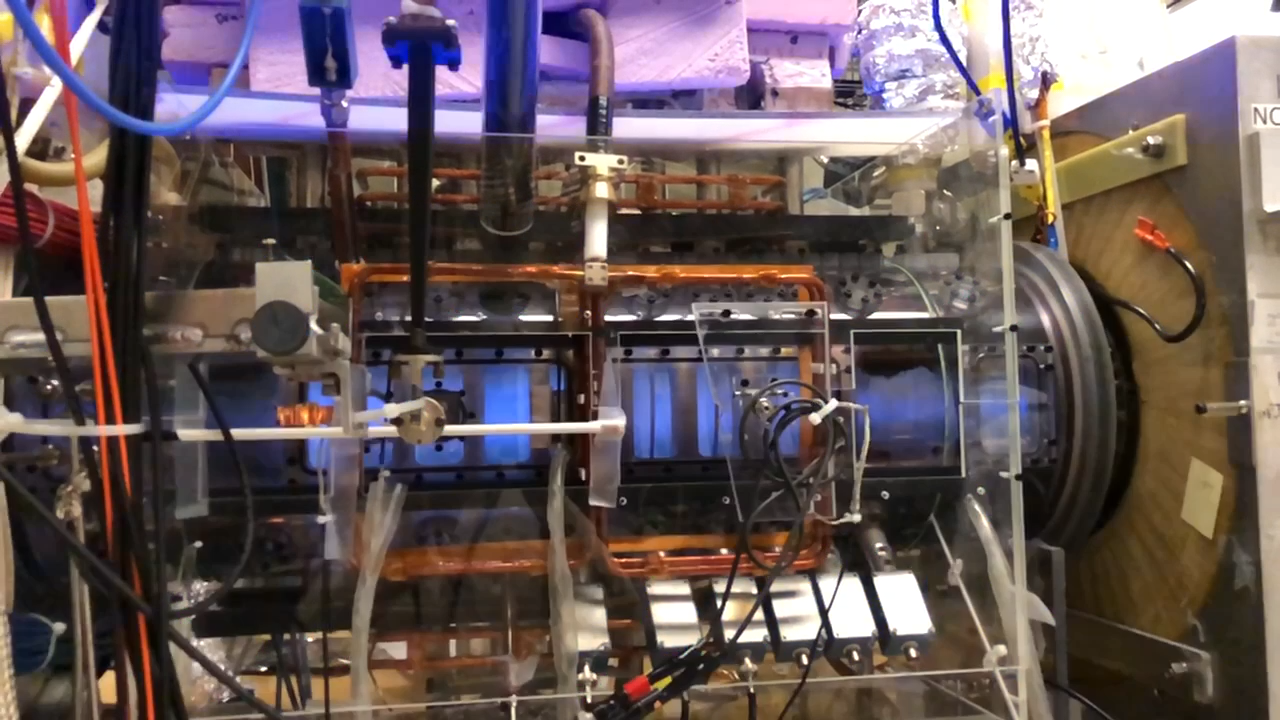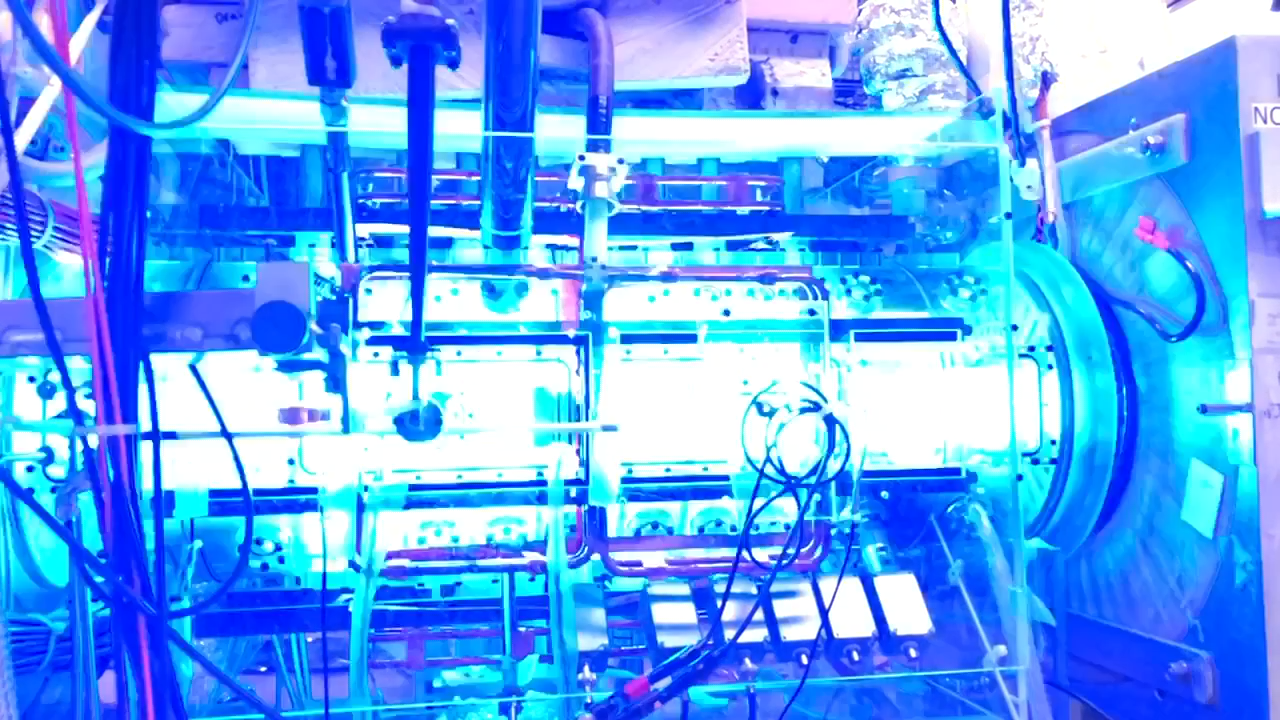We have commenced operations at 1.8 MHz in PFRC-2, after installing new capacitors over the summer to allow us to lower the frequency from the previous value of 4.3 MHz. A lower frequency should allow the RF system to directly heat the plasma ions, not just the lighter electrons.
With each new operating frequency, we need to explore how the plasma responds: to fill pressure, RMF power, magnetic field, mirror ratio, and more. We have now achieved “big bright flashes” with Argon plasmas in PFRC-2! The seed plasma, on the left, is a dimly glowing column. The RMF heated plasma, on the right, produces a bright flash.


This bright light is atomic or molecular line emission, depending on the fill gas. This occurs in the PFRC when the plasma gets dense and energetic due to the RMF current drive. With Argon, we have achieved bright discharges at about 50 kW, or 1/4 of the total RF power available. Argon gas produces a higher density plasma in the PFRC because it has a lower ionization energy.
We are now working to find the parameters which will produce these bright, energetic discharges in our target operating gas of hydrogen. The hydrogen gas must dissociate as well as get ionized. We can experiment with other gases too, like helium and neon, to learn more about the system.
